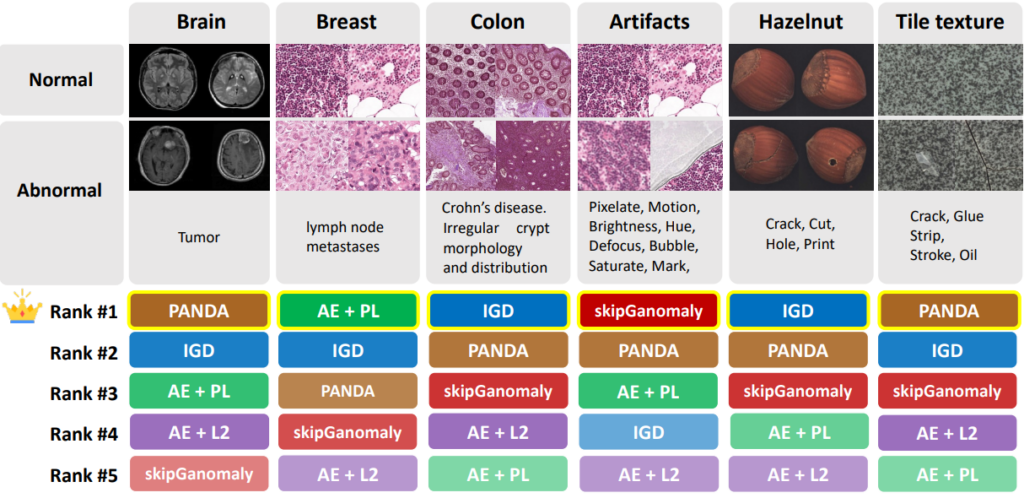This is the official implementation of Feasibility of Universal Anomaly Detection Without Knowing the Abnormality in Medical Images

Source code repository
https://github.com/hrlblab/anomaly_detection
Get our docker image
TodoRun code
Todo
Description
Many anomaly detection approaches, especially deep learning methods, have been recently developed to identify abnormal image morphology by only employing normal images during training. Unfortunately, many prior anomaly detection methods were optimized for a specific “known” abnormality (e.g., brain tumor, bone fraction, cell types). Moreover, even though only the normal images were used in the training process, the abnormal images were often employed during the validation process (e.g., epoch selection, hyper-parameter tuning), which might leak the supposed “unknown” abnormality unintentionally.
In this study, we investigated these two essential aspects regarding universal anomaly detection in medical images by:
(1) comparing various anomaly detection methods across four medical datasets;
(2) investigating the inevitable but often neglected issues on how to unbiasedly select the optimal anomaly detection model during the validation phase using only normal images;
(3) proposing a simple decision-level ensemble method to leverage the advantage of different kinds of anomaly detection without knowing the abnormality.
Referece
Feasibility of Universal Anomaly Detection without Knowing the Abnormality in Medical Images
Can Cui, Yaohong Wang, Shunxing Bao, Yucheng Tang, Ruining Deng, Lucas W. Remedios, Zuhayr Asad, Joseph T. Roland, Ken S. Lau, Qi Liu, Lori A. Coburn, Keith T. Wilson, Bennett A. Landman, Yuankai Huo
MICCAI MILLanD2023 Workshop